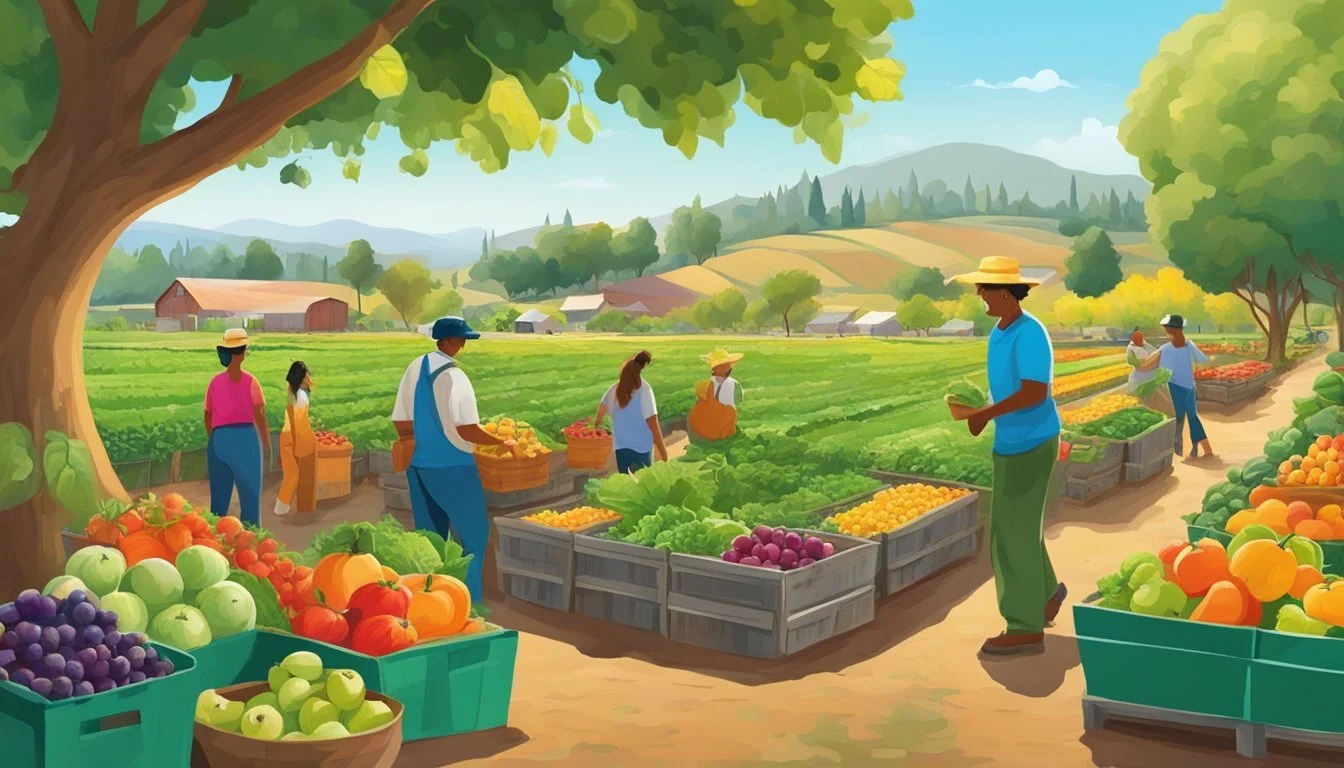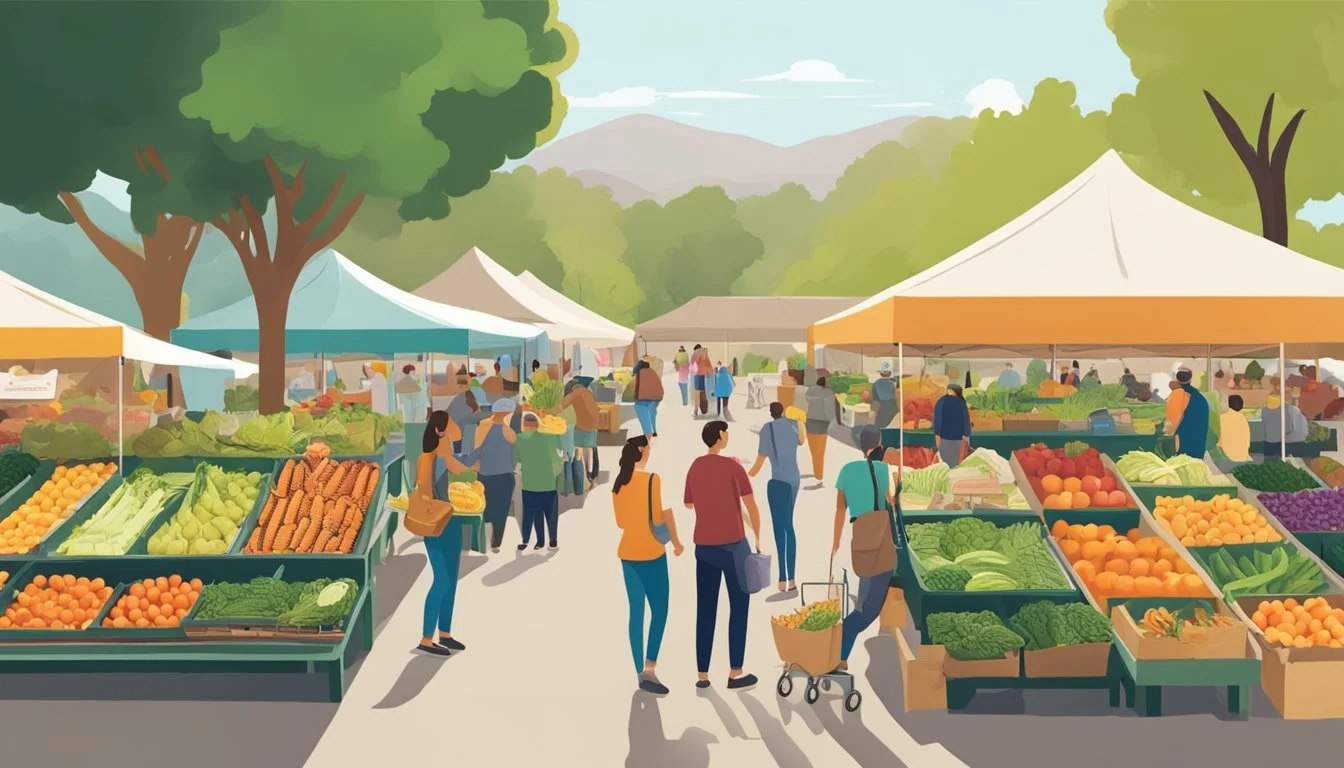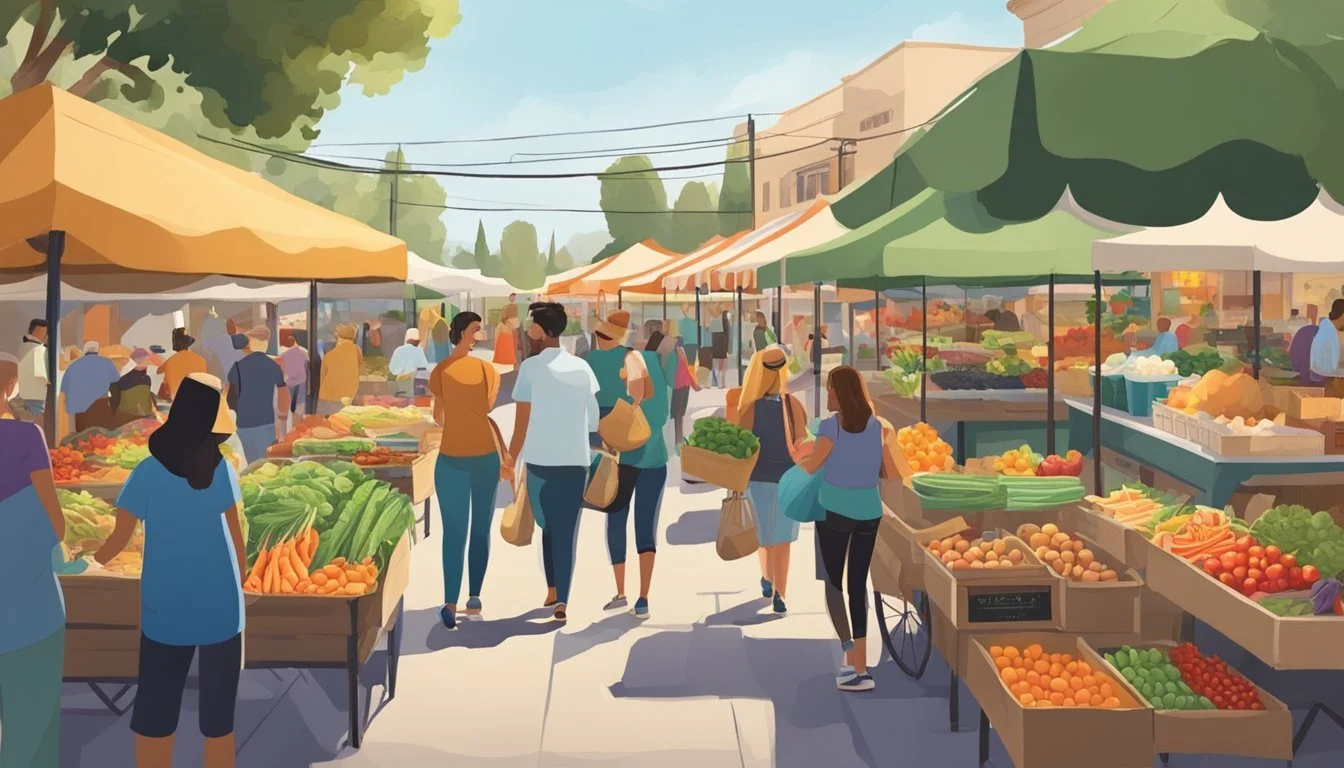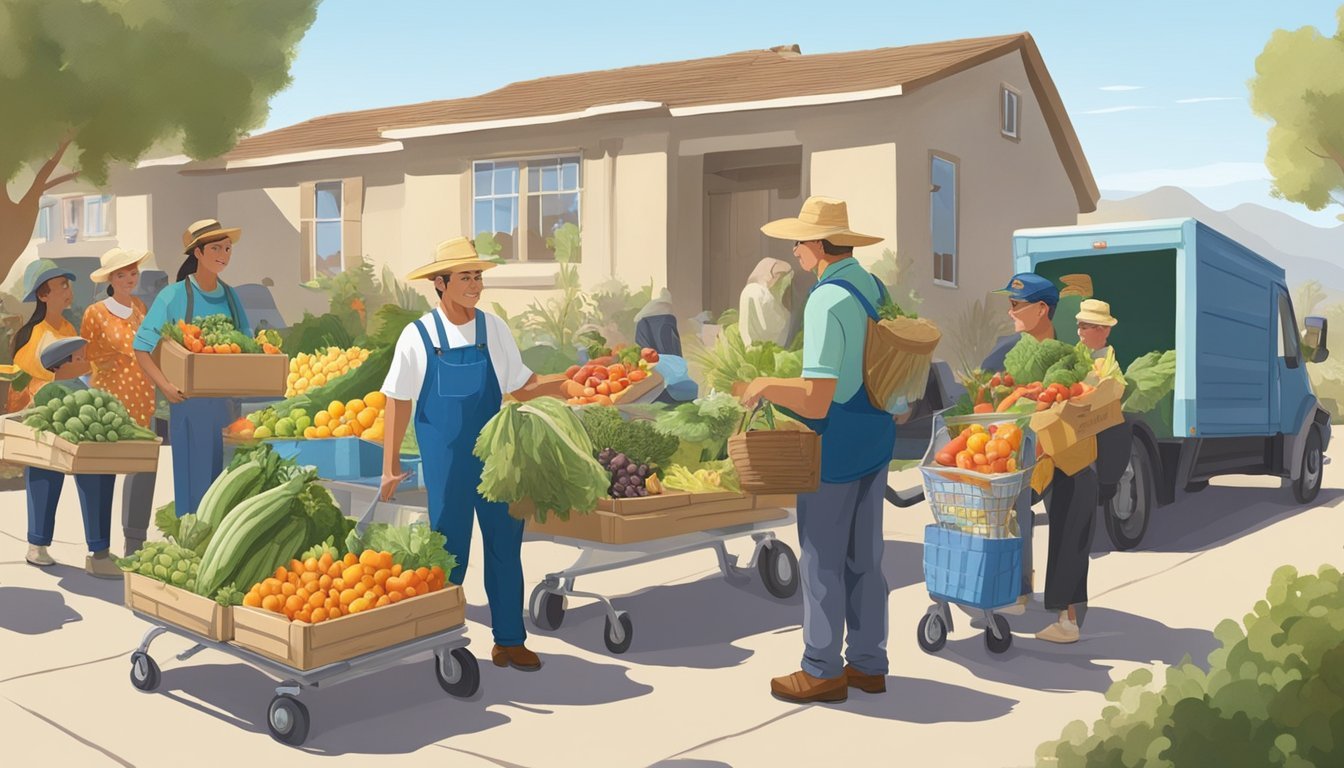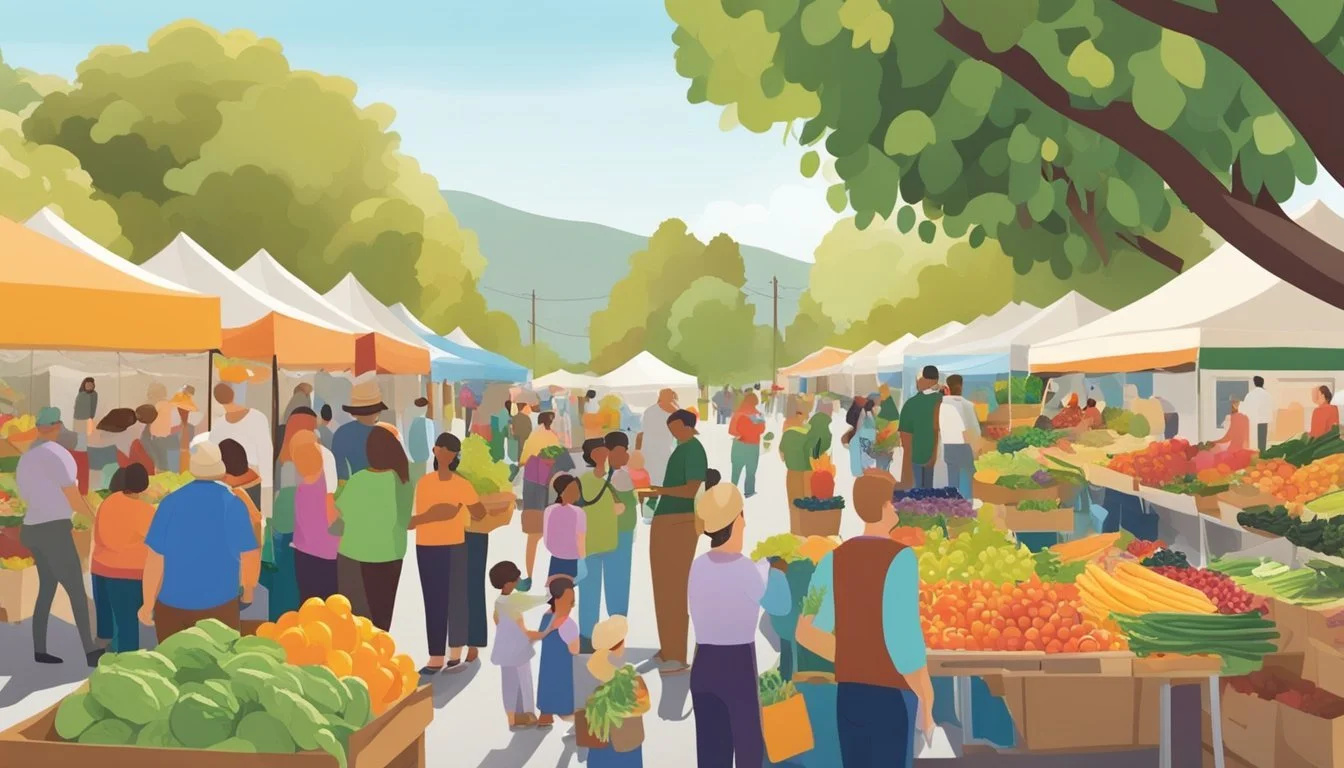Community Supported Agriculture (CSA) in Santa Clarita, CA
A Guide to Local Farm Shares
Community Supported Agriculture, commonly known as CSA, has established itself as an innovative model for connecting farmers directly with consumers. In Santa Clarita, California, this system facilitates a symbiotic relationship where residents gain access to fresh, locally-grown produce while supporting local agriculture. By purchasing a share, or membership, in a CSA, community members prepay for a season’s worth of produce, thus sharing in the risks and rewards of farming with the growers themselves. This model strengthens the local food system and cultivates a greater sense of community around agriculture.
Santa Clarita's CSA programs typically deliver boxes of seasonal produce to their members on a regular basis. This not only ensures that households receive a variety of fresh fruits and vegetables, but it also encourages a diet that is aligned with the region's growing seasons. This practice bolsters the local economy and minimizes the carbon footprint linked with transportation of food across long distances. The presence of CSAs in Santa Clarita reflects a commitment to sustainability and a healthier lifestyle, empowering consumers to make ethical food choices while engaging with the rhythm of their local environment.
As CSA initiatives in Santa Clarita flourish, they often extend beyond the box of goods to offer educational resources, community events, and opportunities to visit the farms. These interactions further fortify the connection between residents and the sources of their food, fostering an informed understanding of agricultural practices and challenges. Through such engagement, CSA members become active participants in the journey from farm to table, creating a robust partnership between local farmers and the wider Santa Clarita community.
Origins and Principles of CSA
Community Supported Agriculture (CSA) offers a model of food production and distribution that builds a partnership between farmers and consumers. In Santa Clarita, this approach emphasizes local, fresh produce while fostering a community-oriented food system.
Concept of Community Supported Agriculture
Community Supported Agriculture is a farming model where consumers support a farm operation so that the community can share in both the benefits and risks of food production. Members, often referred to as subscribers or shareholders, make a commitment to a local farm, and in return, they receive a regular share of the farm's harvest. This mutually beneficial arrangement increases community access to fresh, local produce and provides the farmer with a more predictable income.
Historical Development in California
In California, CSA began to gain momentum in the 1980s, reflective of a broader national and global interest in sustainable agriculture. The state's diverse climate and progressive food culture offered an ideal environment for CSA farms to thrive. Santa Clarita, with its proximity to large urban centers and agricultural land, has become a part of this movement, fostering connections between local farmers and urban consumers. The growth of CSA in California has been supported by various statewide initiatives aimed at encouraging local food systems and sustainable farming practices.
Benefits of Joining a CSA
Community Supported Agriculture (CSA) offers tangible perks to consumers and farmers in Santa Clarita, CA. Joining a CSA not only fosters health and ecological benefits but also strengthens the bond between community members and local food producers.
Advantages for Consumers
Health Benefits: Consumers receive weekly shares of fresh, season-specific produce, which encourages a healthier diet rich in fruits and vegetables.
Enhanced Flavor and Nutrition: Locally grown food is usually fresher, and as a result, it can be more flavorful and nutritionally rich compared to food that has traveled long distances.
Knowledge of Food Sources: Members have the assurance of knowing where their food comes from and how it is produced, fostering transparency and trust in the food system.
Ecological Impact: By participating in a CSA, consumers help reduce the carbon footprint associated with the transportation of food and support environmentally responsible farming practices.
Community Connection: Membership in a CSA builds relationships through regular interactions with farmers and fellow community members, contributing to a sense of belonging and mutual support.
Advantages for Farmers
Stable Income: Farmers benefit from the financial stability provided by upfront payments from CSA members, which helps with the farm's cash flow and planning.
Reduced Marketing Costs: A direct relationship with consumers lowers marketing and advertising expenditures, enabling farmers to focus more on care of the land and produce.
Enhanced Farm Resilience: Inherent risks in farming, such as weather changes or market fluctuations, can be mitigated by the CSA model, which allows for a more even distribution of risk.
Immediate Feedback: Farmers receive direct feedback from their members, which can guide the improvement of their practices and crop selections, ensuring member satisfaction and retention.
Community Engagement: CSAs allow farmers to engage with their community directly, fostering stronger ties and mutual understanding between consumers and those who grow their food.
CSA Operations in Santa Clarita
Community Supported Agriculture in Santa Clarita flourishes with diverse product offerings and flexible subscriptions tailored to community needs. Each farm operates with a deep understanding of both seasonal factors and consumer demand.
Range of Products Offered
In Santa Clarita, CSA farms offer a varied range of products which typically include:
Vegetables: A selection of seasonal vegetables that are grown locally.
Fruits: A variety of seasonal fruits are part of the produce share.
Additional Farm Products: Some farms may also include eggs, honey, and artisanal goods.
Availability of produce can vary based on the time of year and farm capacity.
Subscription and Membership Details
Subscriptions to a CSA generally entail:
Membership Fee: A periodic fee that customers pay, often upfront, for a share of the harvest.
Subscription Types: Different farms in Santa Clarita may offer weekly, bi-weekly, or monthly subscriptions.
Memberships often require a commitment for at least one season, where consumers become stakeholders in the farm's yield.
Seasonal Availability and Pricing
CSA farms in Santa Clarita adapt to seasonal changes with adjustments in:
Availability: Product availability aligns with the local growing season, ensuring fresh, seasonal produce.
Pricing: The fee for CSA shares is typically set before the season begins and may vary based on share size and frequency of delivery.
Some CSAs in Santa Clarita offer sliding scale pricing to accommodate varying budget levels within the community.
Local Agricultural Landscape
Santa Clarita boasts a vibrant agricultural scene, with CSAs playing a pivotal role in bolstering the farmers' economic viability and supporting the local food supply.
Overview of Santa Clarita Farms
Santa Clarita's farms are diverse, offering a wide range of produce that reflects California's rich agricultural tradition. They contribute to the local food system by providing fresh, seasonal produce directly to the consumers. The climate and soil conditions in the region allow these farms to produce various crops, including fruits, vegetables, and artisanal goods.
Role of CSAs in Local Economy
Community Supported Agriculture fosters a direct connection between Santa Clarita farmers and community members. By purchasing CSA shares, locals invest in their regional agriculture, ensuring economic viability for the farms. This model of direct marketing allows farmers to receive fair prices for their goods, while members enjoy the bounty of fresh food throughout the growing season.
Community Engagement and Education
Community Supported Agriculture (CSA) in Santa Clarita plays a vital role in fostering community engagement and enhancing education about sustainable agriculture practices and local food systems.
CSAs and Family Participation
In Santa Clarita, CSAs encourage families to participate directly in the local food system by purchasing “shares” of a farm's harvest. This engagement promotes a tactile connection between families and their food sources. It also offers an opportunity for kids to learn where food comes from and appreciate the effort behind cultivation.
Families: Become farm "members" and receive regular seasonal produce deliveries.
Children: Gain exposure to farming through hands-on activities and experience.
Educational Programs and Events
CSA programs in Santa Clarita often include educational components, such as farm visits and workshops, which are integral in teaching community members about sustainable farming techniques. These events serve as a bridge between consumers and growers, demystifying the farming process.
Workshops: Participants learn about sustainable farming and food preparation.
School Programs: Local schools collaborate with CSAs to educate children on healthy eating and environmental stewardship.
By involving community members, especially families and kids, CSA programs become more than a source of local food; they are educational platforms promoting healthier lifestyles and community resilience. Santa Clarita's CSA programs maintain local food directories to facilitate connections and encourage the community to support their local food system.
Challenges and Considerations
In Santa Clarita, CA, Community Supported Agriculture faces intricacies that encapsulate both sustainable practices and the intricacies of economic viability, alongside the criticality of maintaining a loyal and satisfied membership base.
Sustainable Farming and Economic Risks
Community Supported Agriculture (CSA) in Santa Clarita emphasizes sustainability but encounters economic challenges. Farmers must invest in eco-friendly practices—often with upfront costs—while contending with unpredictable weather, water availability, and market prices. These risks affect their economic stability, directly impacting the sustainability of the CSA model. Here are key issues under this subsection:
Investment in sustainable practices: Requires significant upfront costs which may deter farmers.
Market variability: Can lead to financial instability due to fluctuating demand and prices.
Climatic unpredictability: Poses risks to crop yields, influencing both sustainability and economic outcomes.
Member Retention and Satisfaction
CSA programs rely on consistent membership retention rates; member satisfaction is crucial. Through surveys, CSA managers in Santa Clarita gauge feedback, using these insights to adjust offerings and improve the overall experience. Retaining members not only ensures steady revenue but also reinforces community trust and support. Important points include:
Regular Surveys: Utilized to gather member feedback and align the CSA offerings with consumer expectations.
Engagement Strategies: Developed to maintain a connection with members, increasing the likelihood of renewal.
Key to the viability of local CSAs is the balance they strike between enduring farming challenges and fostering member commitment.
Innovation and Growth in CSA Models
Community Supported Agriculture in Santa Clarita, California, showcases a progressive evolution through the strengthening of CSA networks and the integration of advanced technology and data. These enhancements aim to fortify the connectivity among stakeholders and optimize the operational systems within the CSA sphere.
CSA Networks and Partnerships
The CSA Innovation Network serves as a significant hub for exchanging ideas and resources, streamlining the collaboration between local agriculture stakeholders in Santa Clarita. This network facilitates partnerships that extend beyond simple consumer-farmer transactions, supporting a cohesive fabric of shared responsibility and mutual benefits. CSA partnerships, increasingly robust, are foundational to the adaptation and scalability of these models.
Technology and Data Integration
In a move toward increased efficiency and improved consumer experience, CSAs are employing technology for seamless data integration. By harnessing platforms with open APIs, they are able to integrate real-time data that aides in making informed decisions about production and distribution. This technological progression also aids in cultivating transparent relationships with the community, allowing members to trace the journey of their food from seed to table.
Santa Clarita's CSAs are leveraging these innovations to not only enhance the sustainability of agricultural operations but also to ensure resilience in their business models. This positions local CSAs at the forefront of a movement that is dynamic, responsive to change, and engaged with the well-being of the community and environment.
Support and Resources
In Santa Clarita, CA, Community Supported Agriculture (CSA) initiatives benefit from a robust network of support and resources, including governmental and non-profit backing, as well as valuable research and data insights that foster informed decision-making and sustainable agricultural practices.
Government and Non-Profit Support
Entities like the United States Department of Agriculture (USDA) and URGENCI play significant roles in supporting CSA programs. The USDA, through initiatives like the Snap program, offers financial assistance that can be used for CSA share purchases, helping integrate low-income households into local food systems. Non-profit organizations often provide educational resources, networking opportunities, and advocacy that bolster the operation and outreach of CSAs in the community.
Educational Resources: Workshops, online materials, and direct farmer support.
Networking: Local agriculture events, CSA fairs, and farmer markets.
Advocacy: Policy development and representation at a municipal and state level.
Research and Data Insights
Research institutions and surveys, such as those conducted by the National Agricultural Statistics Service, contribute critical data that shapes the CSA landscape. Survey data from the 2012 Census of Agriculture and subsequent Reports offer insights into consumer behavior, economic impact, and production trends. These data-driven insights aid farmers in making strategic decisions that enhance their CSA offerings.
Consumer Behavior: Preferences and purchasing patterns.
Economic Impact: Market size and financial analysis.
Production Trends: Crop yield statistics and seasonal variations.
Through both support frameworks and a strong data environment, CSA programs in Santa Clarita are well-equipped to meet community needs and maintain a vibrant local food economy.
Consumer Guide to CSAs
In Santa Clarita, Community Supported Agriculture offers consumers fresh, local produce directly from the farmer. This section provides guidance on selecting a CSA that meets your needs and suggestions for engaging with local farmers.
How to Choose the Right CSA
Location and Distribution: Check the proximity of the CSA to your residence and confirm the pick-up locations. Ensure they are convenient for you, ideally within Santa Clarita, to support local agriculture and reduce food miles.
Share Size: CSA shares often come in various sizes. Assess your household's needs and select a share size that matches your consumption patterns. Smaller shares or half-shares might be suitable for individuals or small families, while larger shares may accommodate those who cook frequently or have more members.
Variety and Products Offered: Review what is included in the shares. Some CSAs provide a diverse range of vegetables and fruits, while others might offer additional products like eggs, cheese, or meat. It’s essential to consider your dietary preferences and restrictions.
Payment Options and Flexibility: Understand the payment plans available. Some CSAs require full payment upfront, while others might offer installment plans. Consider your financial flexibility and opt for a CSA with suitable payment options.
Community Engagement: Many CSAs provide more than just food. They might offer farm tours, volunteer opportunities, or community events. Opt for a CSA that aligns with your interest in community involvement and education.
Questions to Ask Farmers
Farming Practices: Inquire about the farming methods used to ensure they align with your values, such as organic or sustainable practices.
Season Length and Produce Availability: Ask about the start and end dates of the CSA season and the typical produce available during these times. This helps in setting your seasonal eating expectations.
Handling of Surpluses or Shortfalls: Understand how the CSA manages excess produce and whether members receive additional benefits. Conversely, ask how they deal with shortfalls due to weather or other factors and what that means for your share.
Communication: Confirm how the CSA communicates with members. Find out if they provide newsletters with updates, recipes, and storage tips. Efficient communication is crucial for a smooth CSA experience.
Change or Cancellation Policy: Discuss the possibility of changing your share size or cancelling your membership, should you need to, and any associated processes or fees.
Future Perspectives
Community Supported Agriculture (CSA) continues to evolve, with potential growth and emerging trends in Santa Clarita setting the pace for broader regional impacts.
Trends and Potential for CSAs
The growth trajectory for CSAs showcases a significant shift toward sustainable agricultural practices. Santa Clarita has seen a growing interest in CSA programs, reflecting a broader Californian and national trend towards locally-sourced food. The increasing consumer demand for fresh, organic produce and transparent food sourcing methods bolsters the potential for CSAs. This movement is driven by an awareness of the environmental and health benefits of supporting local agriculture. As such, one can anticipate the number of CSAs to rise, with innovation in distribution and community outreach playing key roles in their expansion.
Technology Integration: Incorporation of apps and online platforms to streamline CSA membership management and subscription services.
Collaborative Networks: Building stronger relationships among local CSAs to offer a wider variety of produce shares and to handle excess supply effectively.
These developments aim not only to bolster the economic viability of local farms but also to ensure a fresher, seasonally diverse food supply for the community.
Santa Clarita and Beyond
Santa Clarita epitomizes the potential of CSAs to transform and strengthen local food systems. CSAs in this region benefit from California's ideal agricultural conditions, enabling year-round produce availability which may lead to higher subscription rates. Moreover, Santa Clarita's proximity to major urban centers means a larger market for CSAs and the possibility of greater influence on food culture in Southern California.
Community Engagement: Increased educational programs about the benefits of CSA participation could lead to deeper community connections.
Environmental Impact: As an environmentally conscious area, further CSA adoption in Santa Clarita could become a model for sustainable practices in California at large.
CSA initiatives in Santa Clarita are likely to impact not just local food supply chains but also inspire similar sustainable agricultural practices in neighboring regions.
Conclusion
Community Supported Agriculture (CSA) has established itself as a valuable model for connecting Santa Clarita residents with local farmers. Through CSA, members receive fresh, seasonal produce directly from the farms they support. This creates a crucial link between community members and the source of their food.
Benefits to the Santa Clarita community include:
Enhancing local food security by ensuring a steady supply of fresh products.
Supporting local economy and sustainability by investing in neighborhood farms.
Fostering environmental stewardship through the promotion of sustainable agricultural practices.
Challenges such as member retention and competition highlight the need for effective CSA management. Santa Clarita's CSAs have demonstrated resilience by adapting to these challenges. They continue to play a vital role in evolving the local agrifood system towards a more sustainable future.
It is important for continued education and engagement initiatives to maintain and grow CSA membership. Community activities and transparent communication have proven effective in this. Santa Clarita's CSA model is a testament to the potential for such programs to enhance community well-being and foster a connection to the land.
For residents seeking to contribute positively to their local economy and to ensure the vitality of their community's agrarian heritage, participation in a CSA presents a compelling avenue. It's an investment in a sustainable food system and a healthier future.



